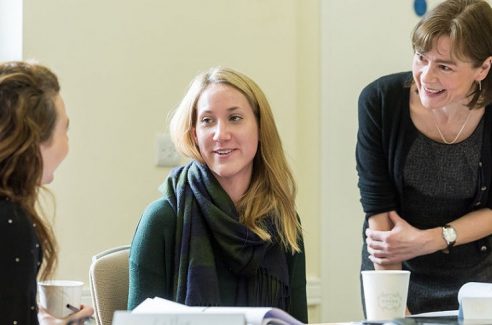 We cap our small-group training at ten delegates per course. Eight is even better. But these limits may seem a little stingy at first – especially if you’ve got a large number to train. So why do we keep group sizes so small?
We cap our small-group training at ten delegates per course. Eight is even better. But these limits may seem a little stingy at first – especially if you’ve got a large number to train. So why do we keep group sizes so small?
There are two main reasons we keep the numbers down for group courses – and these reasons inevitably overlap. They are a) how the group and the individuals experience the courses, and b) how effective the learning is.
In summary




Read on for the full answer …
Managing individual and group experience
We want those who attend the courses to enjoy them – and to engage throughout. One tends to lead to the other, in a virtuous circle. So, managing everyone’s experience is important – and the group’s size has a direct effect on this.
Having enough time
We always squeeze lots of content into our courses – they’re intensive sessions with lots to learn, plenty of discussion and practical exercises, plus individual feedback on each person’s writing sample. The ten-person limit is ideal for this format. Adding in more people naturally adds to the time each part takes – and that time has to come out of other parts of the day.
‘The more people you have on the course, the more people you’ll have in group exercises, and there’s a lot of interactive stuff on the courses,’ says our trainer Jack Elliott. ‘You might be adding five minutes or more for each exercise, and we’re on a tight schedule, as there’s so much to cover.’
There will then be a knock-on effect on the time available for the one-to-ones, when the trainer takes each person through their writing analysis. Many delegates note this as their favourite part of the day, as it’s the moment they see how everything relates to their own results. ‘[Group size] is directly related to how much individual feedback delegates can get,’ says our trainer Kathy Gemmell. ‘You can’t possibly have meaningful one-to-ones with 12 people in one session, whereas you can with eight, even ten.’
Not getting lost in the crowd
A larger group can also make some people less inclined to take part. For more reserved people, comfort level will often decrease as group size increases. ‘Eight to ten seems to be the optimum number for interaction and participation,’ says our trainer Chris van Schaick. ‘The bigger the group, the more reluctant people can be – and it puts in a bias towards the confident ones.’
Comfort level in a group can make a real difference to the experience. Where trainers can tell a group is comfortable together, they can encourage colleagues to provide real-world perspectives on each other’s writing habits. ‘Someone might say, “I think I come across quite rude in email,” and you can say to the rest of the group, “Is that true?”‘ says our trainer Wendy Ferguson. ‘If people are well bonded already, they can give peer feedback in a safe environment.’
Comfortably sharing insights and experience
Indeed, there are many constructive things that can come out of a facilitated group discussion in the right atmosphere – and the safety of a small group tends to create this best. Delegates can share hugely useful insights when they feel able to speak openly – whether that is unpicking the motivations of those reading their reports or pinning down what they need from a company writing style.
Writing is a curiously personal activity. Many people are very sensitive about their ability in it, and many also (quite incorrectly) imagine that they’re alone in feeling this way. So when they feel safe enough to share their struggles – and hear other people reveal their own – it is enormously reassuring. They suddenly see they’re not alone, and this provides a real confidence boost. It’s part of what Wendy refers to as ‘the magic of groups’.
Keeping learning effective
What makes training effective? This is a big question, but we believe the answer includes:
- facilitating an atmosphere where delegates can comfortably share experiences and insights (as we talk about above)
- favouring an active-learning approach over a passive lecture style
- personalising content and feedback.
For us, this means that while the trainer will spend some of the time explaining techniques, more time is given to those facilitated discussions and to hands-on activities. Delegates will work on practical exercises throughout the day to check their understanding and start getting used to putting the techniques into action. The trainer is always on hand to validate and support delegates as they practise.
We also make sure we’re helping to fix the right issues. To do this, we combine our understanding of the high-level challenges (from initial consultations) and layer in what delegates report as their problem areas, as well as what we can see from the individual analysis.
Then there’s the targeted one-to-one feedback on each person’s writing, where we show them where and how to focus their efforts to make the biggest difference. We’ll also point them to resources and ideas for ongoing support.
But these do become harder to do (sometimes impossible) as group numbers extend beyond ten.
Creating active learning
‘With eight to ten delegates, I’m looking at what they’re actually doing with the practice exercises,’ says Wendy. ‘So, you’ve told them the techniques and they look like they understand, but in doing the exercises, they can check that they can actually do it. You can’t do that so well with bigger groups.’
Group size also affects the quality of the group discussions. ‘Yes, you could have 15 people in a room, but then not everybody will be able to have their voice heard,’ Kathy notes. ‘The smaller the group, the more they get out of it, because the more focused the discussions are.’
Personalising content and delivery
Trainers will also hold various mental notes about each delegate’s strengths and weaknesses, meaning they can nudge them toward the areas that will help them most at the key moment. ‘You can’t individualise it as much with larger groups,’ Wendy says. ‘You can’t give them the same level of personalised feedback or the individual “This is good for you,” “And this is good for you.”‘
So, keeping track of individual needs gets trickier with bigger numbers. But crucially, organisers of larger groups’ courses sometimes want to opt out of the writing analysis, which fundamentally changes the nature of the training. ‘Normally, you get two streams of information about the delegates,’ says Wendy. ‘You get what they tell you about what they see as their main challenge. That’s really valuable, and that’s one source of information. The other source of information is that writing sample.’
With the best will in the world, we can’t always see our own issues as well as other people (especially objective experts) can. And why would we? It’s the old ‘We don’t know what we don’t know’ dilemma.
‘So while we’ve got this low group size, where you can look at the sample and at the individual and map those things together, you’ve got a real opportunity,’ Wendy says. ‘If you’re in a bigger group you may just have to take self-identified problems as definitive. And there you can fix the wrong things, because people are not always good at actually knowing what they do.’
What does work for big groups
All this is not to say that there’s no way to train bigger groups. It’s also important to think about your goals and needs for the training (of course). You may be keen to quickly engage employees at scale across the organisation or provide a foundation that could later be built upon. You might have immovable budget restrictions.
With particularly large groups – 20 to 50, or even more – it’s best to keep the topic covered narrower. These numbers lend themselves to shorter, more tightly focused learning events like webinars or lunch-and-learns.
Lunch-and-learn seminars
In the latter (as the name suggests), delegates combine their lunch break with a targeted seminar. With such a limited time – and large group – short, specific topics like how to write effective emails or key points of grammar and punctuation work well.
We still include as much interactivity as possible in these sessions too – because there’s no substitute for actually checking your understanding. ‘We can say these are the rules, but then we’ll always do a practice exercise,’ says Wendy. ‘You’ve got to have people work it through, as sometimes they’ll do it and then they’ll realise they didn’t really understand. Then they can ask questions. And that can work well with a large group, where it’s a very specific thing.’
Questions are always encouraged. But in that larger group, it is likely that not everyone will have the chance (or possibly courage) to ask, and trainers won’t be able to observe or give feedback to everyone.
Webinars
In webinars, participant numbers can be even higher. Here, interactivity takes the form of polls, using the chat box to contribute to discussions or respond to questions, or even practising an exercise for themselves on paper. So the training can still be practical, but people may also choose to be more passive. And again, personal feedback is almost impossible. Instead, trainers will give generalised feedback.
‘We can set an exercise then say “If you look back at what you’ve written, you’ll notice this, this and this,”‘ says Chris. ‘It’s doable up to huge numbers. But what you lose is some of the quality of the participation.’
Simply because the trainer can’t engage with people in such a direct, individualised way as they will in smaller groups, the nature of the learning shifts. ‘It changes the mix,’ Chris continues. ‘It becomes more like a lecture than a seminar. You still get something out of it, but it’s less sticky.’
There are ways to build on the groundwork laid down in these large-group sessions though – whether that’s e-learning or providing the analysis or coaching for a selection of delegates.
Ultimately, our goal is always to help you and your team meet your goals, and your needs – and these needs can include your budget. Intensive small-group sessions are often the best approach for creating meaningful learning and actual change. But in the end each programme will be built to fit you.
Subscribe
Expert advice to your inbox

